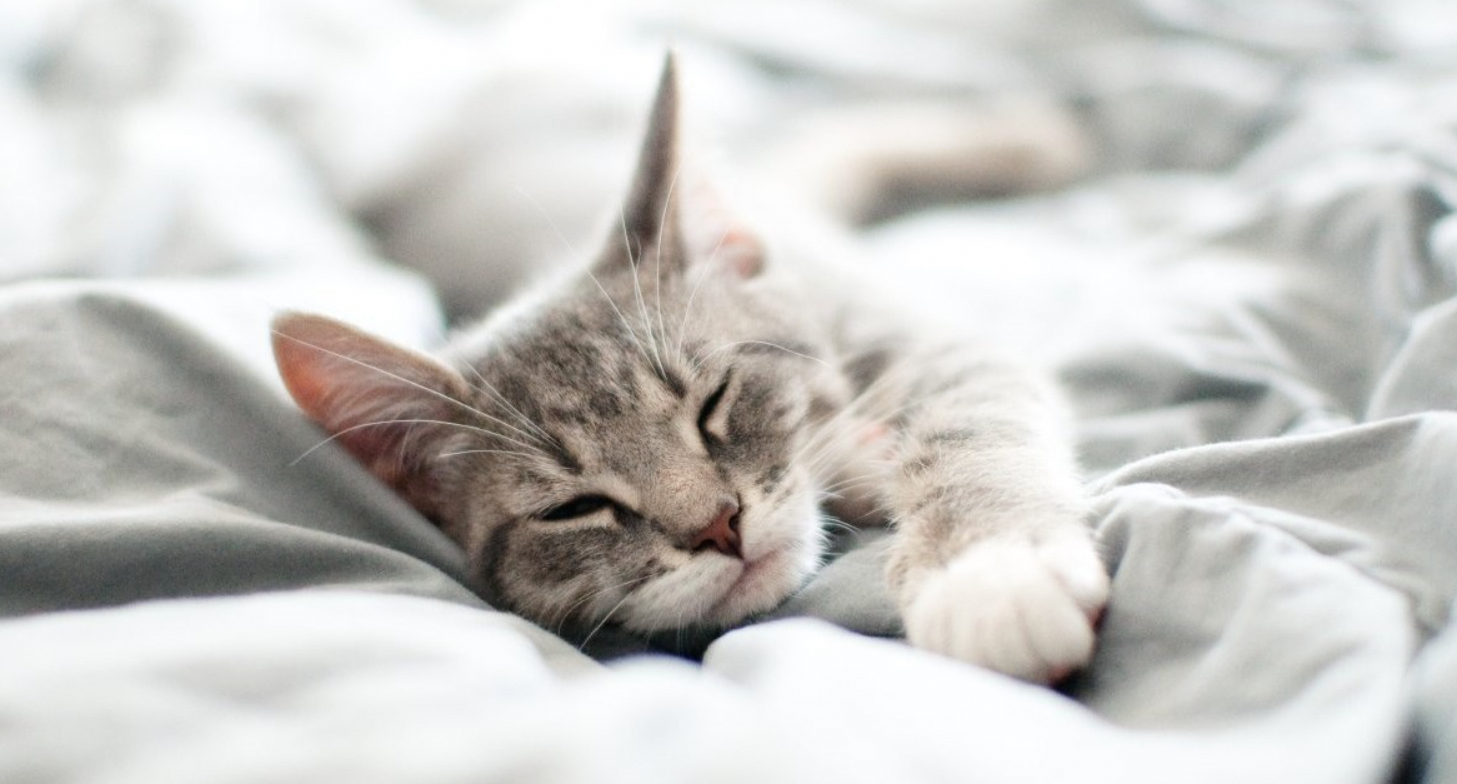Cats, with their adorable antics and affectionate nature, can quickly become integral members of our families. However, sharing sleeping quarters with your feline friend isn’t always ideal for those seeking a peaceful, pet-hair-free rest. If you’re struggling with how to keep cat off bed, this article offers a range of effective strategies that are both humane and cat-friendly.
In This Article
Understand Your Cat’s Behavior
Before we delve into solutions, it’s crucial to understand why cats often choose beds as their preferred resting spots. Cats seek warmth, security, and comfort, which they find in abundance on a cozy human bed. Beds are typically elevated off the ground, which can give cats a sense of security as they can survey their surroundings from a safe height.They also appreciate being close to their owners. Sleeping in their owner’s bed allows them to be close to their favorite people. Understanding these needs helps us address the issue without compromising their emotional well-being.
Establish a Dedicated Sleeping Area for Your Cat
A primary step to discourage your cat from jumping onto your bed is by providing an equally comfortable alternative. Invest in a plush, warm cat bed, ideally situated near your own bed or in a quiet corner where your cat feels secure. Sprinkle it with some catnip or use a familiar blanket with your scent to make it more appealing.
Invest in a Comfortable Bed
Purchase a cat bed that is soft, cozy, and appropriately sized for your cat. Some cats prefer beds with raised edges for a sense of security, while others might like open, flat beds.
Make it Appealing
Encourage your cat to use the new bed by adding items with their scent, such as a recently worn t-shirt or a blanket they already like to sleep on. You can also try sprinkling some catnip on the bed to attract them.
Keep It Clean
Wash the bedding regularly to keep it fresh and inviting. Cats are clean animals and are more likely to use a clean bed.
Remember that it may take some time for your cat to get used to a new sleeping area. Be patient and avoid forcing them to use the bed, as this could create negative associations. With time and positive reinforcement, your cat should begin to enjoy their dedicated sleeping spot.
Use Barrier Methods
Using barrier methods can be helpful in training your cat to use their dedicated sleeping area instead of your bed or other unwanted spaces.Simply keeping your bedroom door closed can prevent your cat from accessing your bed. This method is straightforward and effective.If closing the door is not an option, pet gates can act as a barrier to restrict your cat’s access to certain areas while still allowing visibility and airflow.
Alternatively, use double-sided tape. Cats dislike the feeling of sticky surfaces on their paws. Place double-sided tape on areas where you do not want your cat to sleep, like the edges of your bed. This can deter them from jumping up. Similar to double-sided tape, cats often do not like the texture or noise of aluminum foil. Placing sheets of foil on surfaces can discourage your cat from lying there.
Training Through Positive Reinforcement
Consistent training can teach your cat new habits. Reward your cat with their favorite treats whenever they use their bed. The treats serve as a positive reinforcement that will make your cat associate their bed with good things. Cats respond well to verbal praise and affection. Offer plenty of cuddles, pets, and kind words when your cat uses their sleeping area. Conversely, when they attempt to jump on the bed, gently redirect them to their bed and reward them there. Patience and persistence are key here – remember, learning takes time for both humans and cats.It’s important to be patient and not get frustrated if progress is slow. Cats can take time to adapt to new habits, and patience is key in positive reinforcement training.
Schedule Regular Playtime and Attention
Ensure your cat has ample playtime and attention throughout the day. Boredom or seeking attention could drive your cat to your bed at night. By engaging them with interactive toys and setting aside dedicated cuddle sessions, you may satisfy their need for closeness and reduce nocturnal interruptions.Set aside specific times each day to play with your cat. This routine helps them burn off energy and makes them more likely to rest in their designated sleeping area afterward.
- Interactive Toys: Use toys that encourage your cat to chase, pounce, and leap. Wand toys, laser pointers, and balls can be great for active play sessions.
- Environmental Enrichment: Offer a variety of toys and activities to keep your cat entertained. Puzzle feeders, scratching posts, and cat trees can provide stimulation and help prevent boredom.
- Quality Time: Spend time each day petting, grooming, or simply sitting with your cat. This strengthens your bond and meets their need for attention and affection.
- Consistency: Maintain a consistent schedule for playtime and attention. Cats are creatures of habit, and having a predictable routine can help reduce anxiety and promote relaxation, making them more likely to use their sleeping area during rest times.
- Play Before Bed: Schedule a play session right before bedtime to tire your cat out. This can make them more inclined to settle down in their bed for the night.
Make the Bed Uninviting
If your cat insists on sleeping in your bed or another unwanted area, you can take measures to make that space less appealing. Here are some tips on how to make the bed uninviting for your cat:
Use Unpleasant Textures
Cats typically dislike certain textures under their paws. Cover your bed with materials like aluminum foil, plastic carpet runners (nubby side up), or double-sided tape during the day to deter your cat from jumping on it.
Incorporate Deterring Scents
Cats are sensitive to smell, and certain scents can deter them. Consider spraying a cat-safe deterrent made with scents like citronella, lavender, or eucalyptus on your bedding. Make sure any product or essential oil you use is safe for cats.
Remove Cushions and Soft Bedding
During the day or when you’re not using it, strip your bed of its soft, comfortable bedding, pillows, and throw blankets to make it less enticing.
Change the Layout
Rearrange the bedroom furniture or add items to block your cat’s usual jumping or landing spots, making it more difficult for them to access the bed.
Reduce Warmth
Cats often seek out warm places to sleep. Avoid using heated blankets or pads that may draw your cat to the bed.
By making your bed less appealing, you encourage your cat to seek out their own sleeping area, reinforcing healthy boundaries within your home.
In conclusion, keeping your cat off the bed is about creating a balanced environment where your cat’s needs are met while respecting your personal space. Remember, patience, consistency, and understanding your cat’s behavior are pivotal to success. With the right approach and a little perseverance, your bedroom can remain a haven for restful sleep without excluding your beloved feline companion from your life’s rhythm.
While implementing these strategies, always ensure your cat’s physical and emotional health remains paramount. If despite your efforts, your cat continues to display distressing behaviors or seems overly anxious, consulting a veterinarian or animal behaviorist would be wise to rule out any underlying issues. After all, a harmonious home is one where everyone – including the four-legged residents – sleeps soundly and happily.
